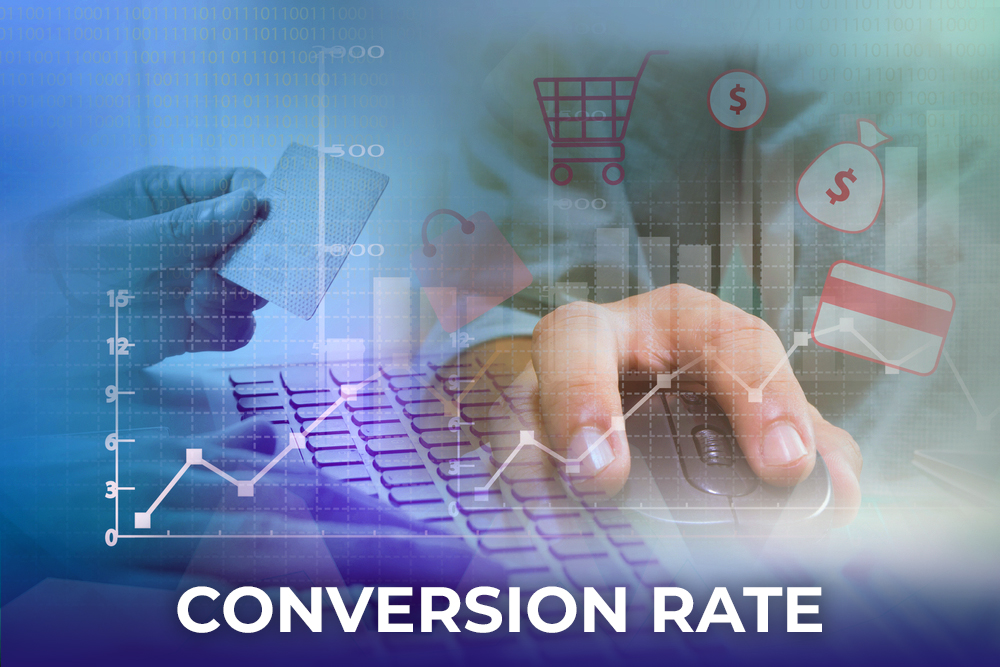|
What Does Conversion Rate
Mean for Your Business?
|
|
A business’s conversion rate is an easy way of knowing how well an enterprise is doing. You may have heard that marketing is the lifeline of business—but the conversion rate indicates how effective the marketing efforts are.
Ultimately, this determines income stability as well as the value of marketing strategies.
|
|
 |
|
What is Conversion Rate? |
|
Your conversion rate depends on what you want your customers to do. It can be the percentage of people who come across your website or landing page and follow through with a desired action.
Of course, desired actions can include purchasing, signing up for your newsletter, or joining a launch waitlist. That said, here’s how to calculate the conversion rate:
- Conversion Rate = (Number of Conversions/Total Visitors) * 100%
- For instance, if your website had 5,000 visitors in a month and 100 of them made a purchase, your conversion rate would be: 100/5,000 * 100% = 2%
The conversion rate is important because it is a way of understanding the strengths and weaknesses of a business.
By knowing how many visitors convert to customers, one can assess what is working and what is not.
|
|
 |
|
The Benefits of Optimizing Conversion Rate |
|
- Increased Revenue: By working on your conversion rate, you can make the most of your traffic.
- Better ROI: Raising your conversion rates means you get more value from your marketing budget.
- Cost Efficiency: With high conversion rates, you would only have to spend a little on traffic growth.
|
|
 |
|
Key Factors Influencing Conversion Rate |
|
- Website Design and UX*: There is a higher chance of turning visitors into customers when your site is simple and easy to navigate.
- Compelling Content: Content that caters to your audience’s needs can aid in attracting more visitors.
- Call to Action (CTA): The content should not just inform but also prompt the needed action.
- Load Speed: Your website should have a swift load time to ensure visitors do not bounce back after a click.
- Trust Signals: Adding testimonials, reviews, and trust badges to your site showcases expertise that plays a big role in conversion.
*UX or User Experience, refers to the overall satisfaction and experience a person has when interacting with a product, system, or service, focusing on usability, accessibility, and pleasure in the interaction. |
|
 |
|
How to Improve Your Conversion Rate |
|
- A/B Testing*: Keep tweaking your headlines and CTAs till you find what performs best.
- Analyze User Behavior: With tools like Google Analytics, you can gain an understanding of how users interact with your website.
- Optimize Landing Pages: Keep your landing pages simple and focused on a single call to action.
- Personalization: Ensure messages and offerings are suited to your audience to sustain engagement.
*A/B testing is a method of comparing two versions of a webpage or app to see which one performs better by showing them to different segments of users and analyzing the results.
|
|
Improving your conversion rate takes patience and diligence. It requires continuous optimization, testing, and refinement to attract potential customers and unlock higher revenues.
Leads originate from various user interactions, such as filling out contact forms, making phone calls, sending emails, data messages, making direct purchases, and requesting additional information. These leads are potential clients who can eventually become loyal customers.
At DIT Web Solutions, we thoroughly examine your digital assets to uncover ways to boost their ability to convert visitors into leads for your offerings.
Utilizing cutting-edge analytics and adhering to industry best practices, we identify precise areas needing enhancement, deploy strategic improvements, and continually track outcomes to promote sustained growth and higher conversion rates.
Our dedicated team is focused on driving your success and strengthening your online impact.
|
|
|

